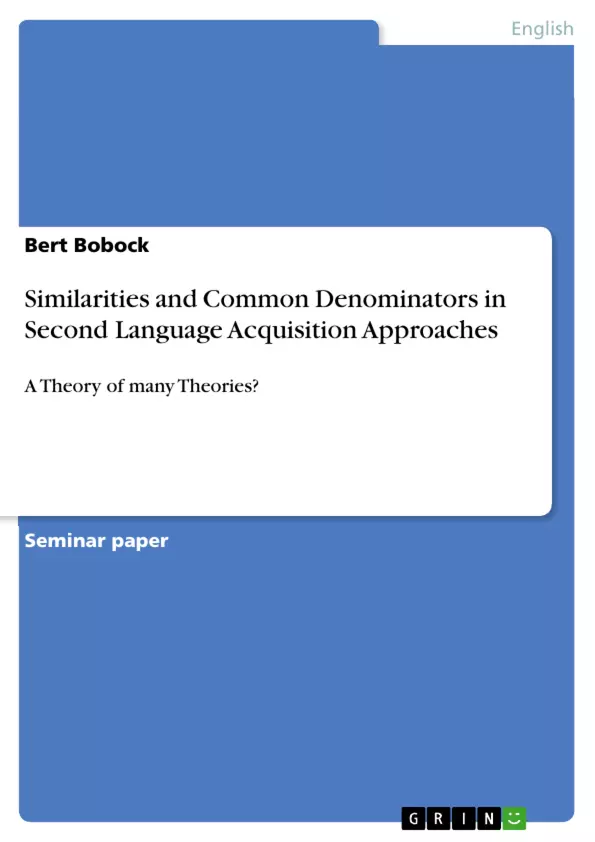Until today, there is no unified theory, which fully explains second language acquisition, even if some attempts of writing comprehensible
theories have been made. This research paper outlines the history of Second Language Acquistion, providing an overview of some of the most influential learning theories, such as the Natural Approach, Behaviorism, Error Analysis, Morpheme Studies, Krashen's Monitor Model, Universal Grammar and The Competition Model. The aim of the paper is to help the reader to better understand recent developments, find out if and to which extent theories have influenced each other, and to disclose similarities that go beyond the respective disciplinary boundaries. How much more do we know today about how languages are learned than we did over fifty or one hundred years ago?
Inhaltsverzeichnis (Table of Contents)
- 1 Introduction
- 2 A History of Second Language Acquisition
- 2.1 Nineteenth Century Reforms and the Natural Approach
- 2.2 Behaviorism
- 2.3 Error Analysis
- 2.4 Morpheme Studies and Krashen's Monitor Model
- 2.5 Nativism
- 2.5.1 Linguistic Nativism: Universal Grammar
- 2.5.2 Parameter Setting in Universal Grammar
- 2.6 Connectionist Approaches: The Competition Model
- 3 Similarities and Common Denominators in SLA Theories
Zielsetzung und Themenschwerpunkte (Objectives and Key Themes)
This research paper aims to provide an overview of the development of second language acquisition (SLA) theories, highlighting key similarities and common denominators that transcend disciplinary boundaries. It explores the historical evolution of SLA theories, tracing their influences and identifying shared elements that have contributed to our understanding of how languages are learned. The paper also critically assesses the progress made in the field, considering whether contemporary research has significantly advanced our knowledge beyond earlier theories.
- The historical development of SLA theories
- The influence of different disciplines on SLA research
- Similarities and shared elements across various SLA approaches
- The evolution of understanding in the field of SLA
- The relationship between language learning and language teaching
Zusammenfassung der Kapitel (Chapter Summaries)
- Introduction: This chapter introduces the field of second language acquisition (SLA) and its interdisciplinary nature. It highlights the complexity of the topic and the lack of a unified theory that can fully explain language acquisition. It also discusses the importance of distinguishing between theories of language learning and their practical implications for teaching methods.
- A History of Second Language Acquisition: This chapter traces the evolution of SLA theories, beginning with the 19th-century Reform Movement and the rise of the Direct Method. It then discusses the emergence of behaviorism in the mid-20th century and its impact on language teaching. The chapter also explores other key theoretical approaches, such as error analysis, morpheme studies, and Krashen's Monitor Model, as well as the development of nativist theories, including Universal Grammar and the Competition Model.
Schlüsselwörter (Keywords)
Second language acquisition, SLA, language learning, language teaching, interlanguage, Universal Grammar, behaviorism, error analysis, morpheme studies, Monitor Model, Competition Model, direct method, natural approach.
- Quote paper
- Bert Bobock (Author), 2012, Similarities and Common Denominators in Second Language Acquisition Approaches, Munich, GRIN Verlag, https://www.grin.com/document/231245



